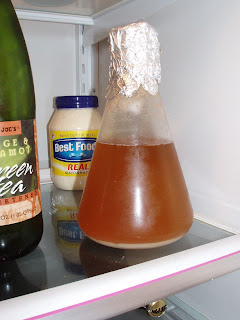If you are only going by unsmacked packs as your sign of bad yeast then you are the one who is wrong.
From the horse's mouth.
From the Wyeast FAQ website:
3. Does the package need to be fully swollen before pitching?
No, The package can be pitched before activating, or at anytime during the activation process. The activation process "jump starts" the culture's metabolism, minimizing the lag phase.
Most new brewers are too quick to declare something wrong, especiallyn where yeast is concerned. That comes from reading books written by brewers who started with crappy yeast that came in cakes may have come in the hot cargo hold of a ship and sat on a grocer's shelf for god knows how long. Modern yeast just doesn't crap put like that these days.
Most of the time it is the brewer not giving enough props to the yeast, and declaring yeast dead too soon, and NOT the yeast itself.
Read my rant about how there is really no BADyeast anymore
https://www.homebrewtalk.com/f163/wyeast-d-o-154573/#post1777619
As you can see, you didn't even have to have the pack expand...there's a bunch of similar threads on here, including one fro yesterday where the info was posted from wyyeast.
If you had made starters from them you would have seen how fine your yeast was. The biggest reason I suggest folks make a starter is if you make one you'll have peace of mind.
And you won't be starting an "is my yeast dead" thread in a couple of days.
Making a starter first insures that your yeast is still alive and viable before you dump it in your beer. You will be less likely to start one of those "is my yeast dead?" threads that are on here every day.
You will also ensure that you have enough yeast usually the tubes and smack packs are a lot less yeast that you really should use for healthy fermentation.
Making a starter also usually means your beer will take off sooner, because the first thing that the little buggers do in the presence of wort (whether in a flask or in a fermenter) is have an orgy to reproduce enough cells to do the job...So it won't take such a long time in the fermenter since they started doing it in the flask.
Additionally it is better for the yeast to consume and reproduce incrementally rather than just dumping them into the fermenter...The yeast will be less stressed out than if you just dump them in.
Stressed out yeast can lead to a lot of off flavors...maybe even (though rare) the dreaded autolysis....Or the curse of 1.030....getting a stuck fermentation because the yeast have bit the dust.
So making a starter proves your yeast is still healthy, allows you to grow enough yeast to do the job, cuts down on lag time, and ensures that you will not get off flavors or stuck ferementations from stressed out yeast.
And most importantly it proves to you that your yeast is HEALTHY, so you won't think something is wrong with your beer during fermentation.
If yeast can be harvested from a 45 million year old block of amber, then you can see how hardy they are and you shouldn't be so quick to discount yeast from a modern yeast lab.
Don't be so quick to count the little buggers out next time.





